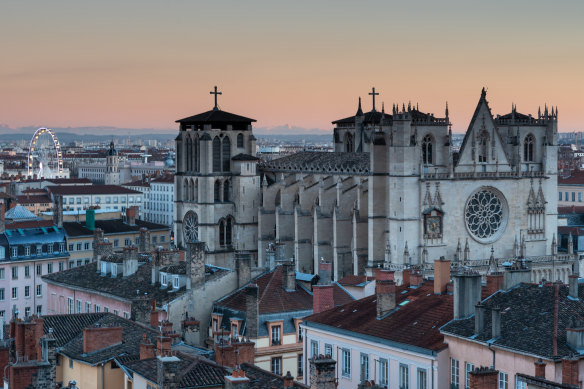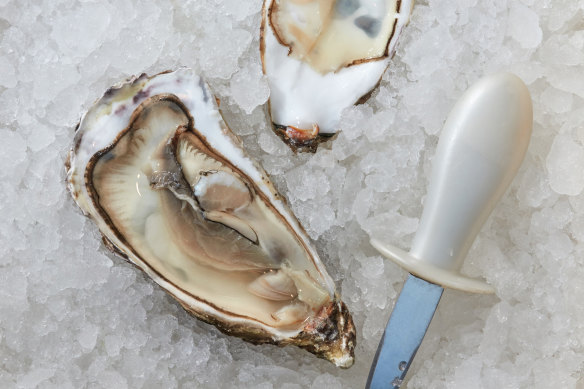[ad_1]
Don’t forget your walking shoes. Bordeaux is best explored by roaming its magnificent streets, squares and boulevards. Yes, plenty of other French cities have glorious architecture, but only Bordeaux has 1800 hectares of its city centre protected by a World Heritage listing.
Bordeaux’s other great claim to fame is of course its acclaimed local wines. You can dive deep into the history and culture of wine at the riverside La Cité du Vin. (Its gleaming, swirling surface was inspired both by the Garonne River and by the swirling motion of wine in a glass.)
Alternatively, settle in at one of the city’s inviting wine bars. Soif has a 35-strong wine list and a menu of seasonal bites based on whatever’s freshest in the local markets. The local restaurant scene is equally lively: try Symbiose, where you can graze from small plates then pass through the hidden entrance to its speakeasy-style cocktail bar.
In the north of the city, former industrial areas have been reinvented as hip neighbourhoods. Head to Chartrons for intriguing art studios and boutiques as well as the CAPC contemporary art museum, tucked into an atmospheric former warehouse.
One more thing: housed in a former submarine base, the dazzling Bassins des Lumières is Europe’s largest digital art centre.
Have a long lunch in Lyon

Historic Lyon.Credit: Travelpix / Stocksy United
Ask any French foodie where to find the country’s best cuisine and the answer will always be the same: Lyon. The city is reputedly home to 4300 restaurants, including a phalanx of Michelin-starred restaurants and the famous bistros known as bouchons.
These traditional diners are the place to sample classic Lyonnais dishes such as coq au vin, tablier de sapeur (breaded tripe) or the delicious fish dumplings known as quenelles – all washed down with a local drop of Beaujolais.
It’s not just the restaurants that are worth checking out. Lyon is also home to some spectacular bars including Le Dôme, a glorious former chapel where you can down designer cocktails beneath a 32-metre high dome.
The city is also famous for the secret passageways known as traboules that wind through the Vieux Lyon and Croix-Rousse neighbourhoods. Around 40 of them are open to the public – some with vaulted ceilings, others with spiral staircases – and tracking them down is half the fun. Originally created as shortcuts for fetching water, the city’s silk workers later used them as a way to transport the delicate fabric under cover. During World War II they were favourite meeting places for agents of the French Resistance.
One more thing: Lyon has some magnificent trompe-l'oeil murals, including Le Mur des Canuts and La Fresque des Lyonnais, an 800-square-meter painting featuring portraits of 30 famous Lyonnais.
Be enchanted by Nantes

Oysters in Nantes.Credit: Yaroslav Danylchenko / Stocksy U
There is one word that always crops up when people write about Nantes: “former”. As in, the former capital of Brittany. Or, the former slaving port. But a visit to Nantes is not just about looking back at the past.
Of course, it has some glorious old buildings. There is the Château des ducs de Bretagne, which houses the city’s history museum; the art deco Passage Pommeraye shopping arcade; and the gorgeous art nouveau brasserie La Cigale (stop in for a dozen local oysters).
Loading
The real reason to visit this university town, however, is to enjoy the art of living well. The people of Nantes have it nailed. They revel in their green surrounds; there are more than 100 parks, including the verdant Jardin des Plantes, with its waterfalls, ponds and 10,000 plant species.
Art is everywhere too, including the delightful Estuaire art trail, 30 monumental sculptures arrayed along the riverbanks, including everything from a giant sea snake to a semi-submerged house. A three-hour cruise is the best way to take it all in.
And of course there is fabulous food. Head to the lively Talensac market to find the best fresh produce and seafood, stop in at one of the many creperies, or try a local cake such as the aromatic gâteau Nantais, fragrant with almonds and rum. And don’t forget a glass of the local drop, muscadet.
One more thing: the old shipyards are now home to delights such as Les Machines d’Île, giant mechanised animals and insects beloved by both children and adults.
Mix it up in Marseille

Marseilles’ old harbour.Credit: Getty Images/iStockphoto
Forget what you think you know about Marseille. Considered a no-go zone for many decades, the city has had a makeover and is now an inviting destination. In fact, if you are looking for the proverbial something-for-everyone, Marseille hits the spot.
Lively neighbourhoods? There are plenty to choose from including the Vieux-Port waterfront district; the colourful Panier, with its steep streets and stairways; and Le Cours Julien, originally home to the city’s fruit and veg market, now a hub for street art and second-hand stores.
Love a good museum? Behind that lace-like façade, Mucem – the Museum of Civilisations of Europe and the Mediterranean – mounts fascinating exhibitions covering culture, society, history and politics. Or perhaps you prefer more old-school attractions? The Notre-Dame de la Garde basilica not only has spectacular interiors complete with Byzantine mosaics, but also stunning views across the city and the sea. Equally impressive views can be had on the boat trip out to the Château d’If, the prison where the fictional Count of Monte Cristo was detained.
One more thing: Marseille has one of the most interesting food scenes in France thanks to multicultural trendsetters such as Lebanese chef Najla Chami and Congolese chef Hugues Mbenda, not to mention some excellent Moroccan, Algerian and Tunisian restaurants.
Make the most of your health, relationships, fitness and nutrition with our Live Well newsletter. Get it in your inbox every Monday.
[ad_2]
Source link